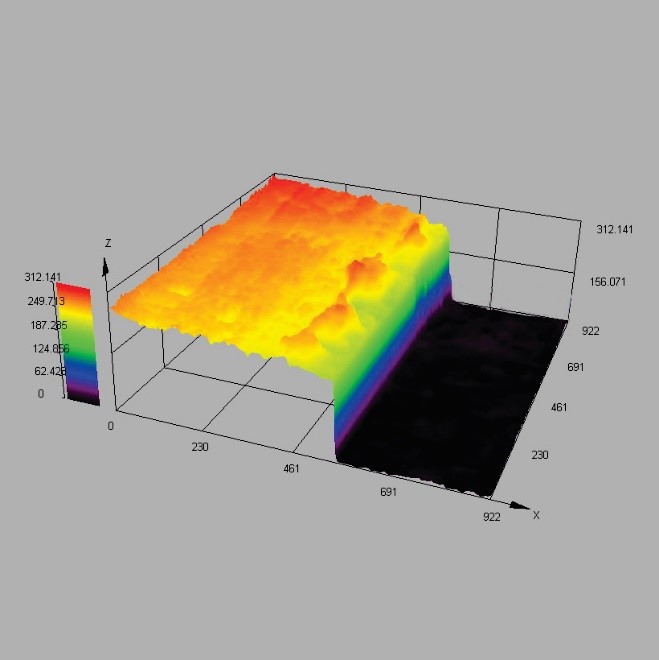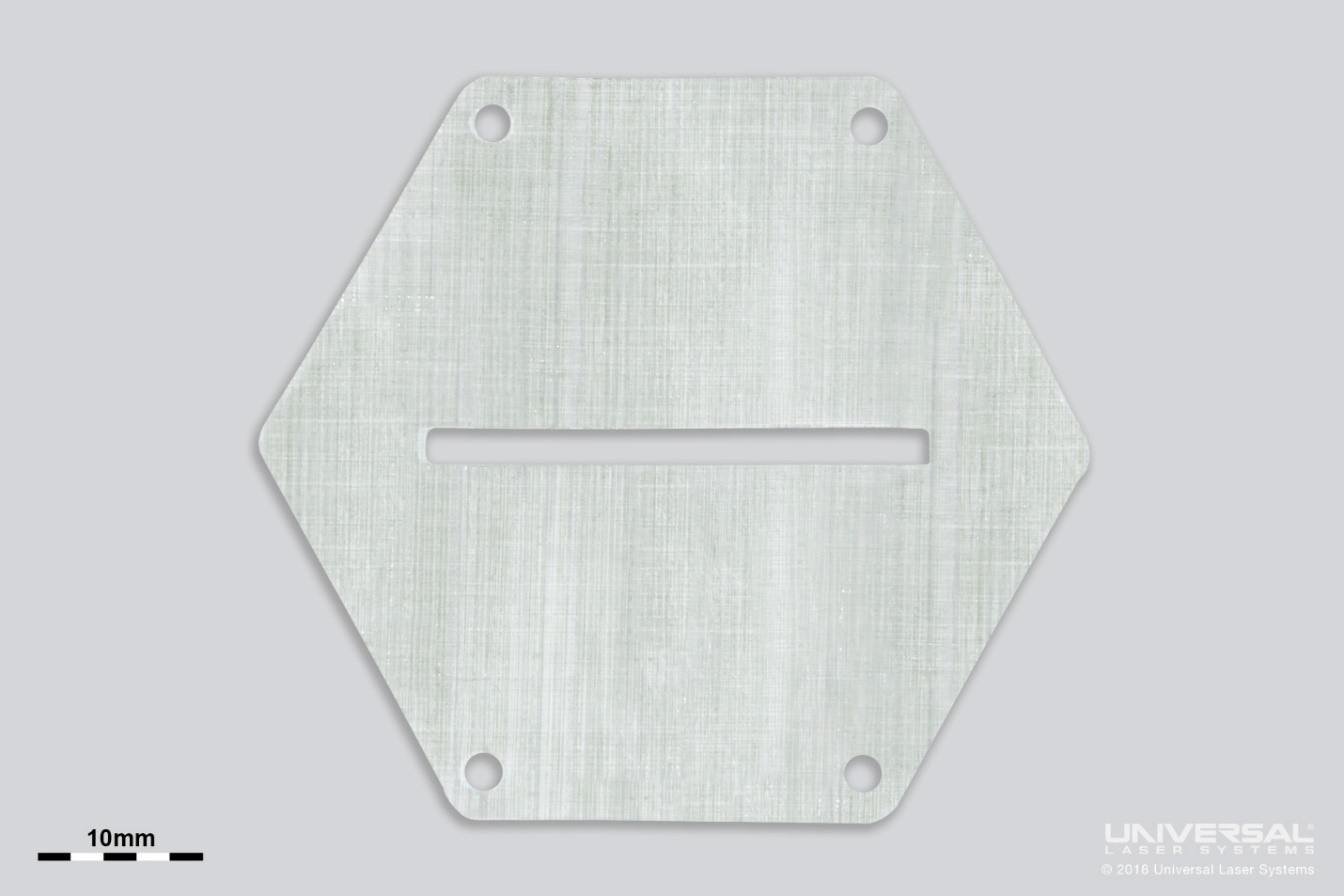Laser Processing of Dyneema® Composite Fabric
Introduction
Dyneema® Composite Fabric is a waterproof, 175µm-thick, non-woven fiber laminate material consisting of proprietarily fused layers of Ultra-High Molecular Weight Polyethylene (UHMWPE) and carbon fiber, sandwiched between layers of polyester film. A diagram depicting Dyneema Composite Fabric is shown in Figure 1.Dyneema Composite Fabric is ultra-lightweight, highly durable, has high tear and tensile strength, and is chemical resistant. The fusing of carbon fiber and UHMWPE fiber creates a sturdy fabric that is more impact and vibration resistant than carbon fiber alone and used to make composites specifically for high impact and high vibration applications.
Dyneema Composite Fabric is only suitable for laser cutting, which produces consistent laser-processed edges and minimal heat-affected zones. The non-contact nature of laser processing enables applications with small features and fine geometry to be processed with virtually no material deformation. This may be difficult to achieve with traditional mechanical methods. Other laser processes are not indicated as they are not conducive to the intended use of Dyneema Composite Fabric. Universal Laser Systems makes it possible to consistently and repeatedly process this material to a high degree of dimensional accuracy because the non-contact nature of laser processing eliminates material deformation during processing.
Laser Processing Notes
Dyneema Composite Fabric was tested to assess laser processing compatibility and to determine the best configuration of laser peak power and wavelength. Dyneema Composite Fabric appears to absorb 9.3µm and 10.6µm laser energy efficiently. A microscopy image taken at 300x magnification of the processed edge of Dyneema Composite Fabric is shown in Figure 2. The 3D image in Figure 3 depicts how the processed edge of the epoxy adhesive responds to laser cutting with the system configuration of a single 75 watt 9.3µm CO2 laser source.Processing Example
Dyneema Composite Fabric applications requiring fine geometry and intricate detail without degrading the physical properties of the material can be achieved with Universal Laser Systems technology. An example demonstrating the results of laser processing Dyneema Composite Fabric using the recommended 75 watt 9.3µm system configuration is shown in Figure 4.Conclusion
Dyneema Composite Fabric is suitable for laser processing and was extensively tested to determine the optimal processing configuration. Through this testing, it was determined that laser cutting is viable with this material and that a 75 watt 9.3µm or 10.6µm CO2 laser source is the optimal system configuration. Dyneema Composite Fabric efficiently absorbs the 9.3 or 10.6µm laser energy to produce a processed edge that has a minimal heat-affected zone and nominal discoloration.
Dyneema® Composite Fabric is a waterproof, 175µm-thick, non-woven fiber laminate material consisting of proprietarily fused layers of Ultra-High Molecular Weight Polyethylene (UHMWPE) and carbon fiber, sandwiched between layers of polyester film. A diagram depicting Dyneema Composite Fabric is shown in Figure 1.Dyneema Composite Fabric is ultra-lightweight, highly durable, has high tear and tensile strength, and is chemical resistant. The fusing of carbon fiber and UHMWPE fiber creates a sturdy fabric that is more impact and vibration resistant than carbon fiber alone and used to make composites specifically for high impact and high vibration applications.
Dyneema Composite Fabric is only suitable for laser cutting, which produces consistent laser-processed edges and minimal heat-affected zones. The non-contact nature of laser processing enables applications with small features and fine geometry to be processed with virtually no material deformation. This may be difficult to achieve with traditional mechanical methods. Other laser processes are not indicated as they are not conducive to the intended use of Dyneema Composite Fabric. Universal Laser Systems makes it possible to consistently and repeatedly process this material to a high degree of dimensional accuracy because the non-contact nature of laser processing eliminates material deformation during processing.
Laser Processing Notes
Dyneema Composite Fabric was tested to assess laser processing compatibility and to determine the best configuration of laser peak power and wavelength. Dyneema Composite Fabric appears to absorb 9.3µm and 10.6µm laser energy efficiently. A microscopy image taken at 300x magnification of the processed edge of Dyneema Composite Fabric is shown in Figure 2. The 3D image in Figure 3 depicts how the processed edge of the epoxy adhesive responds to laser cutting with the system configuration of a single 75 watt 9.3µm CO2 laser source.
Dyneema Composite Fabric applications requiring fine geometry and intricate detail without degrading the physical properties of the material can be achieved with Universal Laser Systems technology. An example demonstrating the results of laser processing Dyneema Composite Fabric using the recommended 75 watt 9.3µm system configuration is shown in Figure 4.Conclusion
Dyneema Composite Fabric is suitable for laser processing and was extensively tested to determine the optimal processing configuration. Through this testing, it was determined that laser cutting is viable with this material and that a 75 watt 9.3µm or 10.6µm CO2 laser source is the optimal system configuration. Dyneema Composite Fabric efficiently absorbs the 9.3 or 10.6µm laser energy to produce a processed edge that has a minimal heat-affected zone and nominal discoloration.




